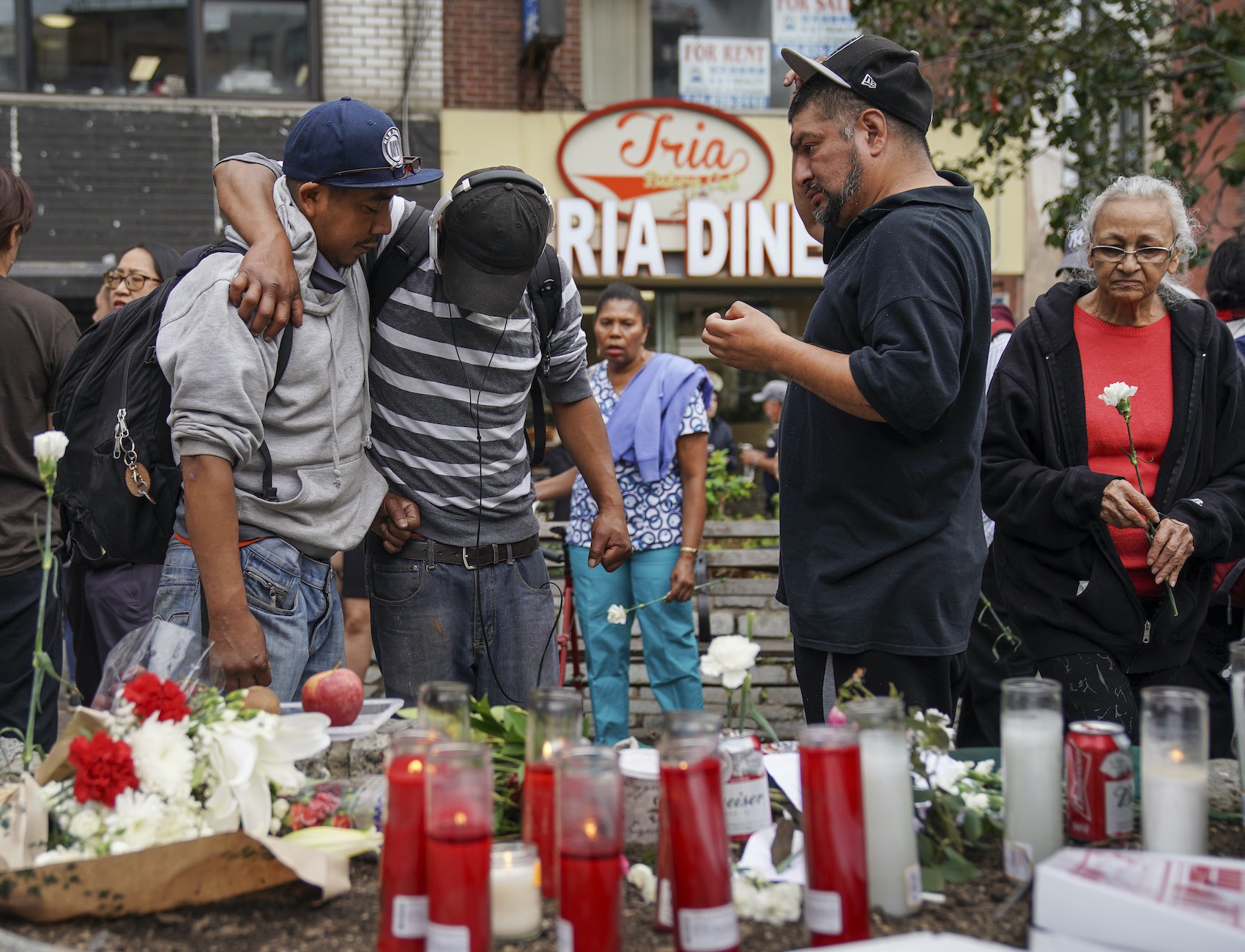Exploiting New York City’s Chinatown Killings to Attack Bail Reform
The New York Post used a tragedy to target bail reform activists, rather than point to the challenges of a failed mental health system and poverty.

The public’s perception of crime is often significantly out of alignment with the reality. This is caused, in part, by frequently sensationalist, decontextualized media coverage. Media Frame seeks to critique journalism on issues of policing and prisons, challenge the standard media formulas for crime coverage, and push media to radically rethink how they inform the public on matters of public safety.
A quadruple murder in Manhattan’s Chinatown on Oct. 5, allegedly carried out by Randy Rodriguez Santos, has spurred more misleading anti-bail reform coverage from the New York Post.
Rodriguez, who has a history of arrests and whose neighbors said was struggling with mental health issues, is accused of killing four homeless people and severely injuring a fifth. He was arrested and charged with four counts of murder and one count of attempted murder.
The Bronx Freedom Fund, a bail fund for low-income New Yorkers, bailed out Rodriguez in August for an unrelated charge of skipping a court date and failing to enroll in court-mandated social services. The New York Post has now seized on that charge in its coverage to fearmonger over bail reform and exploit the Chinatown tragedy.
From Oct. 6 through Oct. 16, the Post ran six articles––an editorial, two opinion columns and three news reports––that fingered bail reform, and the Bronx Freedom Fund in particular, for Santos’s alleged crime. One piece—headlined “Manhattan DA twice let Chinatown ‘killer’ Randy Santos slide”—suggested weak-kneed district attorneys let Santos slip through the cracks. “Criminals are doing this because they know there is no punishment,” Dennis Quirk, president of the state’s court officers union, told the Post.
That story, like the others, held up Santos’s case as an example of why bail reform and other efforts to reduce the prison population will increase crime. He was “free roaming the streets at the time of the attacks because a nonprofit group, Bronx Freedom Fund, had posted his bail while he was jailed for allegedly groping a young woman,” the story read. In another Post piece, columnist Bob McManus wrote: “[Santos] is a poster child for a return to aggressively custodial approaches both to mental-health treatment and public-safety policy.” The Post, in its typical style, also used anti-poor pejoratives like “vagrant,” “derelict,” “beggar,” “addict,” and “scammer” in its coverage to describe not only Santos but also homeless people in general, and to pathologize the entire population.
As The Appeal has detailed before, the smearing of bail reform activists after one of their clients commits a crime is a variation of Willie Hortonism––a moral hazard that has been a major driver of mass incarceration. If a person who makes bail or is “let go” from the criminal legal system goes on to commit a tabloid-ready crime, the media and the public often deem those responsible for the person’s release—judges, district attorneys, community bail funds—morally responsible for said crime. Those in power, therefore, are incentivized to seek tough-on-crime penalties, like long prison sentences.
The inverse, of course, is rarely true: If those in power wrongfully keep people in jail pretrial for years on end for crimes they didn’t commit, or pile on years to prison sentences, or lean on poor people for gratuitously cruel plea bargains, the violence of the criminal legal system is never said to be the fault of those in power. Because such violence occurs in the shadows of New York’s notoriously opaque prison system and overwhelmingly to people the media often doesn’t value––Black, Latinx, and poor––it has little to no public relations risk for DAs and the police. Rarely will the suffering of those in prison or the plight of families torn apart by overzealous prosecutors be splashed on the front pages of New York tabloids.
This asymmetry provides a perverse incentive regime for those in power—and one reformers have spent years trying to fight. Attempts to humanize the suffering of prison, show how out of line the U.S. is with the rest of the world, and appeal to basic notions of justice by reducing the use of pretrial detention via bail reform have had modest but real success. This, predictably, has led to a backlash from pro-carceral voices, often featured in or relied upon in outlets like the Post.
But there’s a much bigger issue to be addressed in the wake of these how-did-they-slip-through-the-cracks stories: If one wanted to advocate for a world with zero risk of crime, one might envision a world not too different from any boilerplate dystopian sci-fi novel: police everywhere, mass surveillance, and monitoring. Anything short of this world will, by definition, carry risks. This is the necessary end point of Willie Hortonism, but this reality is itself a crime—a violation of basic freedoms and a system built on surveillance and punishment.
Reform will, by its very nature, lead to more free people and those free people, like other free people, may very well go on to commit crimes. This is why it’s essential that the media not only document the risk of crimes that may result from those free on bail, but also document the very real and horrible crime of prison itself. This is why the media must focus not only on supposed failures in our carceral system but also how our mental health and social services failed people like Santos—poor, marginalized, and often homeless.
Outlets like WNYC, for example, framed the killings and Santo’s case as a failure of mental health officials. A New York Times story detailed a city with inadequate intervention strategies, and a lack of jobs and affordable housing. Both pieces touched on a broader conversation that’s long overdue: One-off DAs don’t create the conditions that led to what happened in Chinatown; entire systems do. And entire systems need holistic critiques, not emotionally charged, narrow appeals to harsher laws and longer prison sentences.
